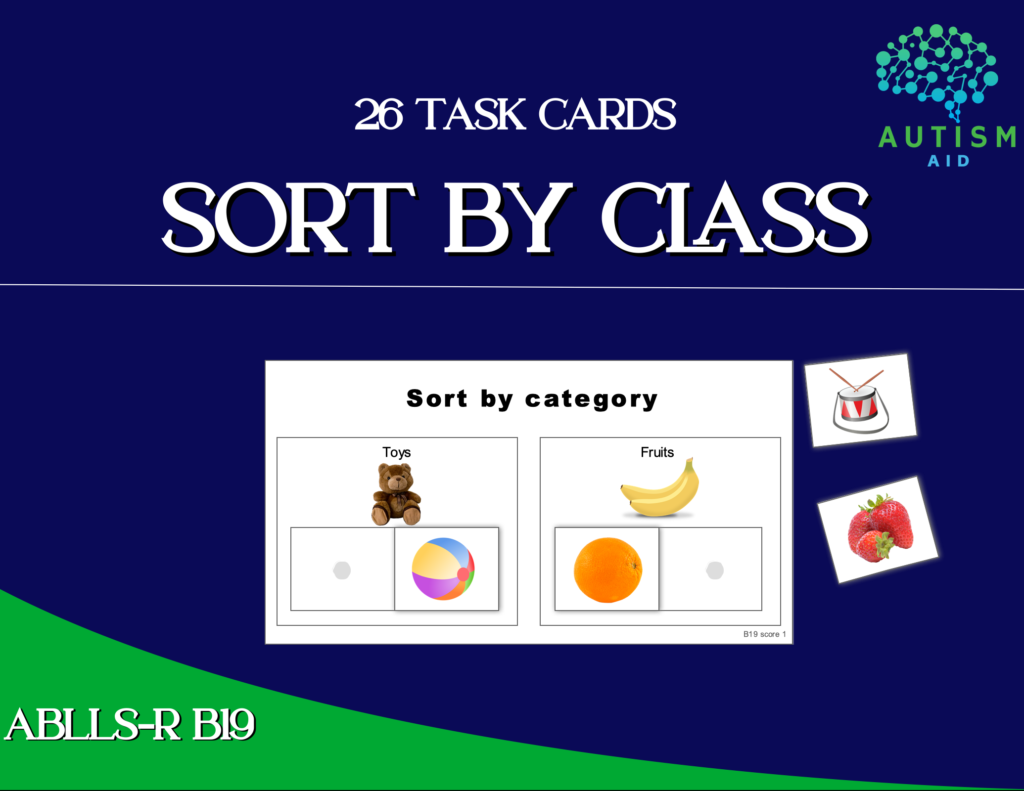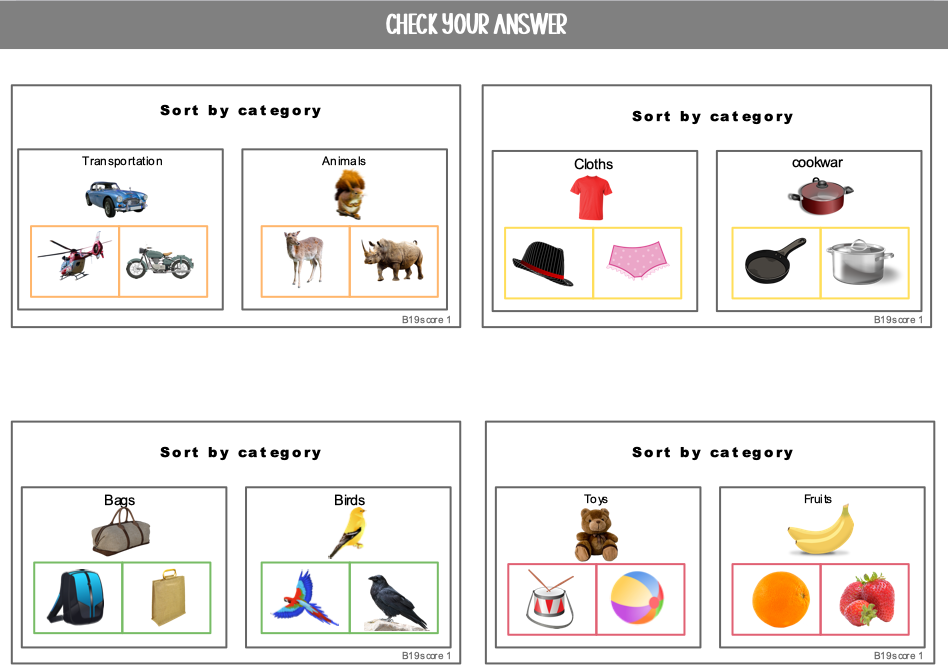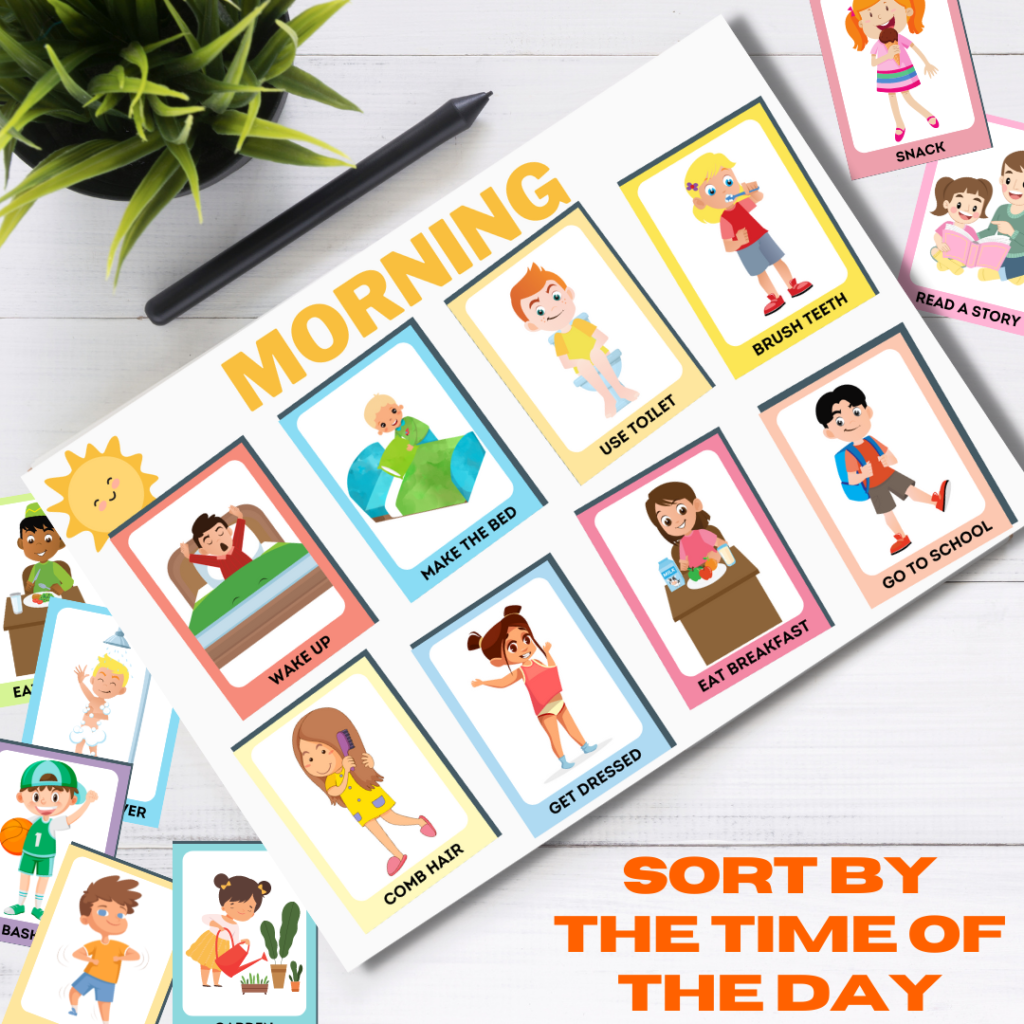Sorting activities are an essential part of early intervention and ABA programs. Understanding classification can be particularly challenging for children with autism. Sorting by categories is the act of organizing objects into different groups that have similar attributes. Sorting and classification games will help your child learn new skills and develop social awareness.
This article is designed to teach children with autism or developmental disabilities to sort items in the correct class or category.
1. Sort by Color
In order to sort objects into groups, children must first understand what colors mean. This activity helps them do just that. You can teach your child to sort by color using ready-to-print and use sorting mats like this, or you can encourage your child or students to use colored markers to color items according to their own preferences, then sort them. They can also use crayons or paint to make their own designs. The activities and variations are endless.

2. Sort by Shape
To help children learn how to classify things by shape, try using a variety of materials. You can use plastic cups, paper plates, construction paper, cardboard boxes, or even cereal boxes. Simply cut out shapes from each item and place them in a pile. Then ask the child to pick up one shape at a time and put it with similar shapes. If the child puts the object in the wrong spot, encourage him or her to move it to the correct place.
3. Sort by Size
Another type of sorting activity involves sorting objects by size. This is a good activity for older children who are able to differentiate the size. Ask the child to sort items into groups based on size. For example, you might ask him or her to separate toys or building blocks into small, medium, large, and extra-large objects. There are also a lot of fun sorting activities by size like this one.
4. Sort by category
Once your child is old enough, you can teach him to sort by categories like sorting objects into animals and fruits, or transportation and drinks.

This can be a powerful tool to teach your child a variety of skills. Classification is designed to teach children with autism how to create links between objects, environments, and people.

5. Sort by time
Sorting or grouping objects or events according to their similarities in the time of day they are carried on is a difficult sorting activity for children with autism.
This is because children with autism have a hard time understanding the concept of time. Moreover, sorting by the time of day is a great skill to work on their sorting skills needed for higher mathematical thinking.
Sorting is a special skill that helps children with autism learn to categorize, pull details from larger categories, develop fine motor skills and work on timing. It helps children develop a range of thinking skills and build the foundations for later problem-solving.

